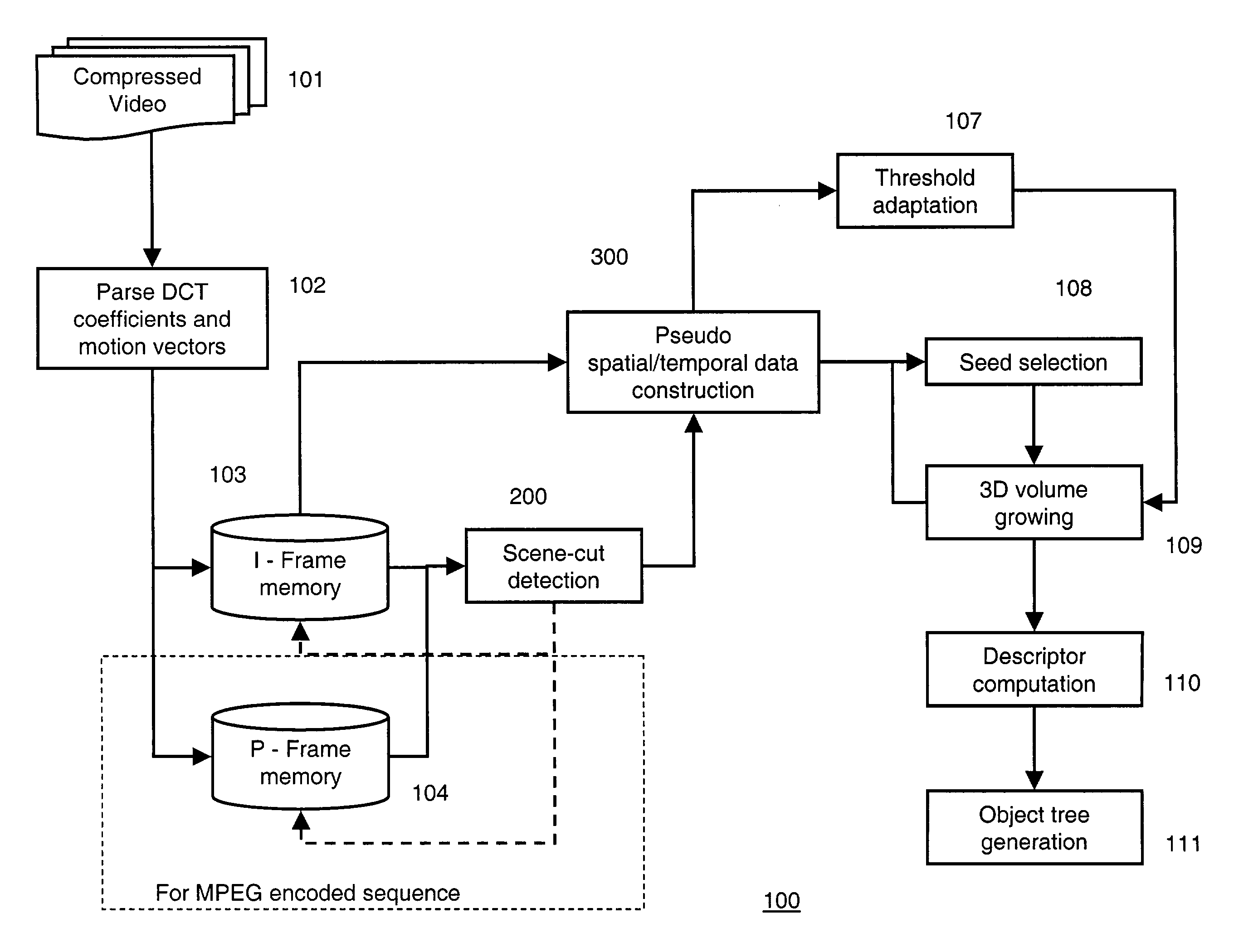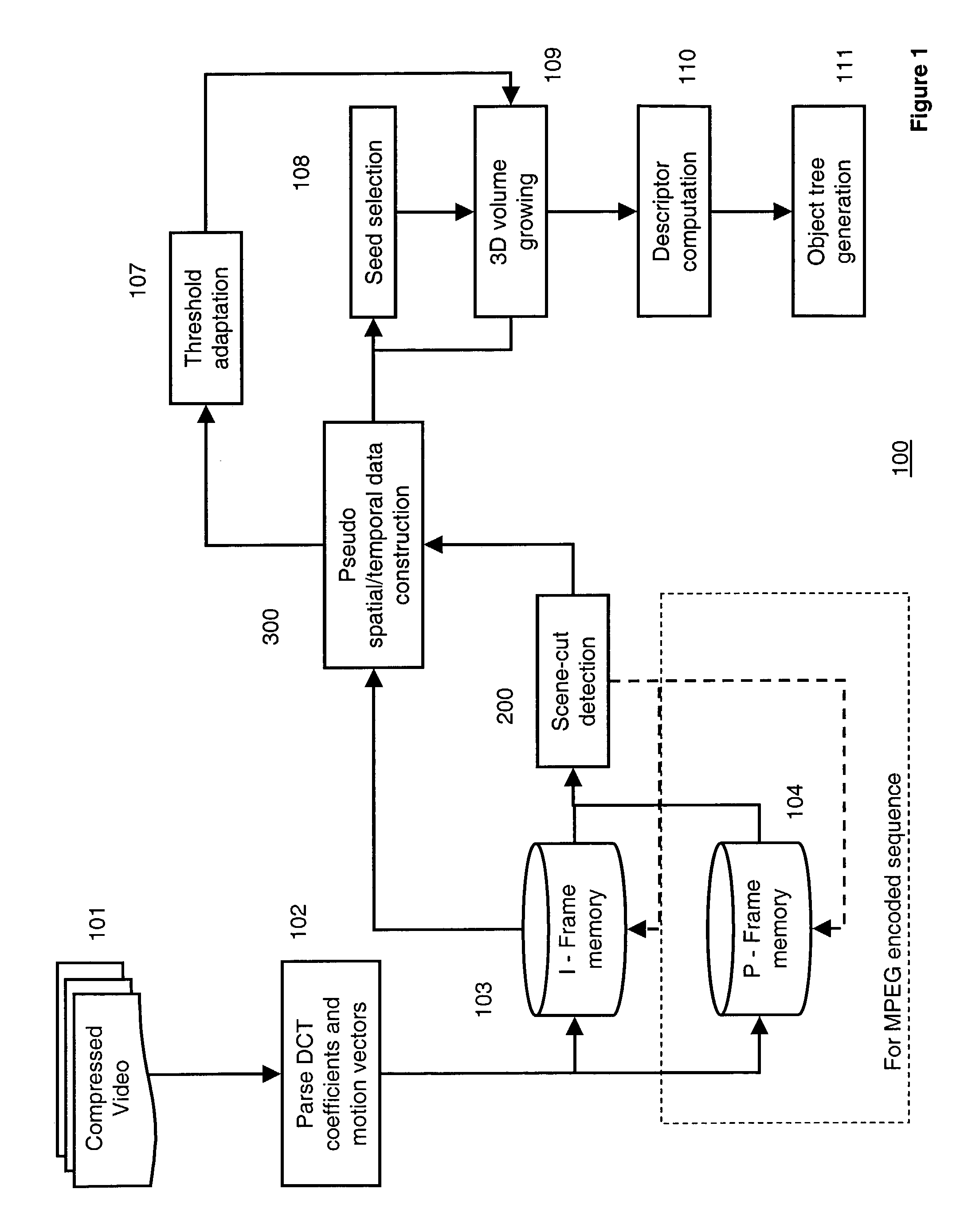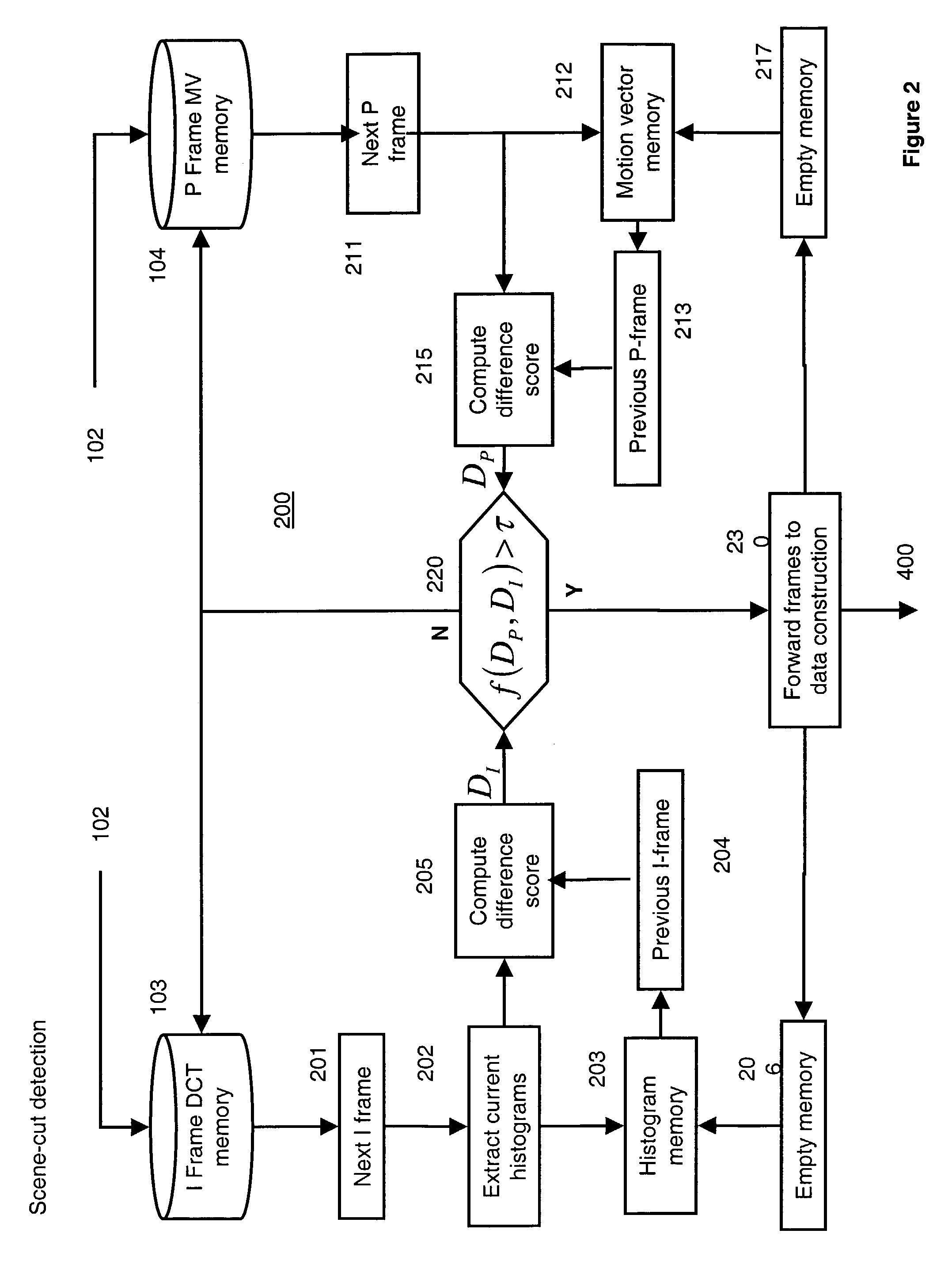Method for segmenting 3D objects from compressed videos
a 3d object and compressed video technology, applied in the field of segmenting videos, can solve the problems of prone to quantization errors, contaminated motion vectors, and inability to obtain original picture information such as the intensity of pixel colors
- Summary
- Abstract
- Description
- Claims
- Application Information
AI Technical Summary
Benefits of technology
Problems solved by technology
Method used
Image
Examples
Embodiment Construction
[0037]FIG. 1 shows a method 100 for segmenting 3D objects 111 from a compressed video 101 according to the invention. The video 101 includes a sequence of 2D (spatial) frames arranged in a temporal order. The compressed video is first parsed 102 to obtain the DCT coefficients and motion vectors used to compress the original pixel intensity values. The DCT coefficients that are parsed from the compressed video are stored in an I-frame memory 103 and the parsed motion vectors are stored in a P-frame memory 104.
[0038]Although the example compressed video 101 that is used to describe the invention is compressed according to the widely used MPEG standard, it should be understood that the invention can also be applied to videos compressed according to other transformations, such as, fast Fourier transform (FFT), or wavelets. Therefore, when we say ‘transformed coefficients’ we means DCT coefficients, FFT coefficients, wavelet coefficients, motion coefficients, or any other reduced set of ...
PUM
 Login to View More
Login to View More Abstract
Description
Claims
Application Information
 Login to View More
Login to View More - R&D
- Intellectual Property
- Life Sciences
- Materials
- Tech Scout
- Unparalleled Data Quality
- Higher Quality Content
- 60% Fewer Hallucinations
Browse by: Latest US Patents, China's latest patents, Technical Efficacy Thesaurus, Application Domain, Technology Topic, Popular Technical Reports.
© 2025 PatSnap. All rights reserved.Legal|Privacy policy|Modern Slavery Act Transparency Statement|Sitemap|About US| Contact US: help@patsnap.com



